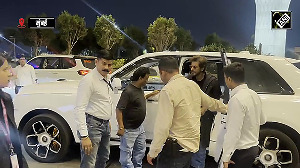Formula One will look very different this season due to rule changes.
The following details what to look out for at the first race in Melbourne on March 6:
ENGINES
Engines must now last for two races, rather than just one, with any unscheduled change resulting in a 10-place penalty on the starting grid. That will put a premium on reliability.
"Every second grand prix is going to be tough, particularly Malaysia where we'll all be stepping into the unknown," says Williams' Australian driver Mark Webber.
The change is aimed at cutting costs and improving safety through reduced speeds. A two-race engine should be less powerful than one designed for half the distance.
QUALIFYING
Qualifying will be held over two days, with the final session on Sunday morning. The Sunday and Saturday times will be aggregated.
This will mean more action for the crowd at the circuit on Sunday but the starting grid and pole position will not be decided until shortly before the race.
AERODYNAMICS
Front wings have been lifted by 50mm, to reduce downforce, while the rear wings have been brought forward 150mm relative to the centre line between the rear wheels.
The diffuser at the rear becomes shallower, at around 40 percent the height of 2004 levels.
The changes, intended to cut downforce by about 25 percent to slow cars on safety grounds, should make cars 'twitchier' to drive and more spectacular to watch with less grip.
"The focus in the factory has been to recover that downforce and obviously it won't be until the early races of the season that we'll see how well each team has done," said Williams' co-owner Patrick Head.
Testing has seen teams experiment with innovative aerodynamic parts, notably McLaren with a horn-like wing on the engine cover.
TYRES
Tyres must last for qualifying and the race. The reason being that harder, and therefore more durable, tyres will reduce cornering speeds.
This means that pit stops will look very different, with fewer mechanics involved as cars take on fuel without tyre changes, and will be less frequent.
Tyres can be replaced in the event of a puncture or damage caused by debris, but not at a refuelling stop.
Drivers would previously have changed tyres two or three times during a race, after around 70 to 100 km, in carefully orchestrated pitstops.
They must now last around 350km.
All drivers will be allowed three sets of the same specification tyres for Saturday and Sunday. One will be used for Saturday practice, another for qualifying and the race while the third set is held back in case of a puncture.
"The driver who can look after his tyres best, and has the feel for how to maximise tyre performance over a full race distance, will undoubtedly gain a performance advantage," says Renault's engineering head Pat Symonds. "I think we will see a change in the rhythm of races this year."








 © 2025
© 2025